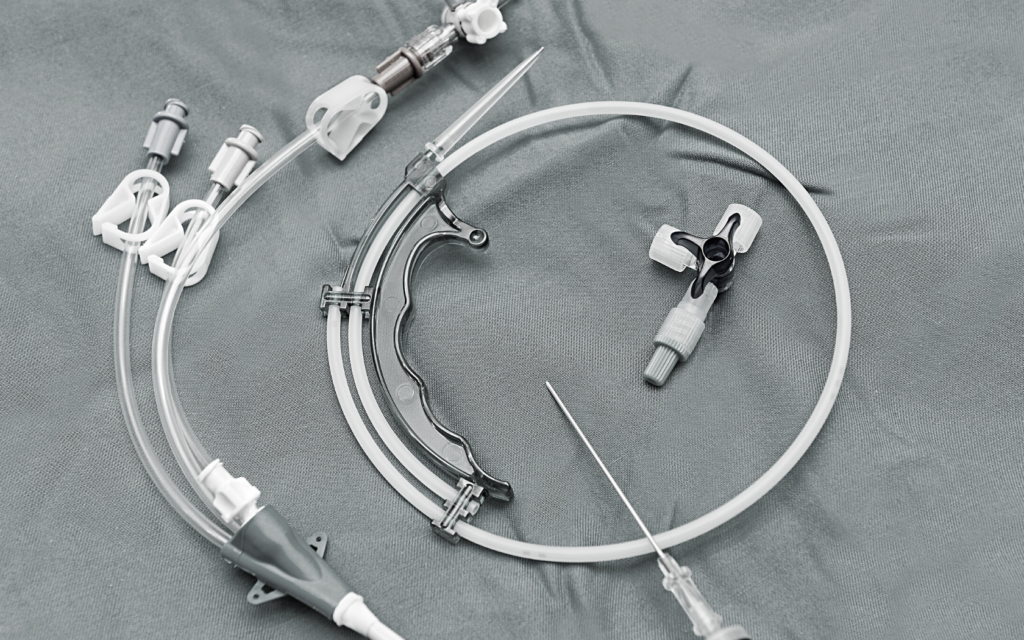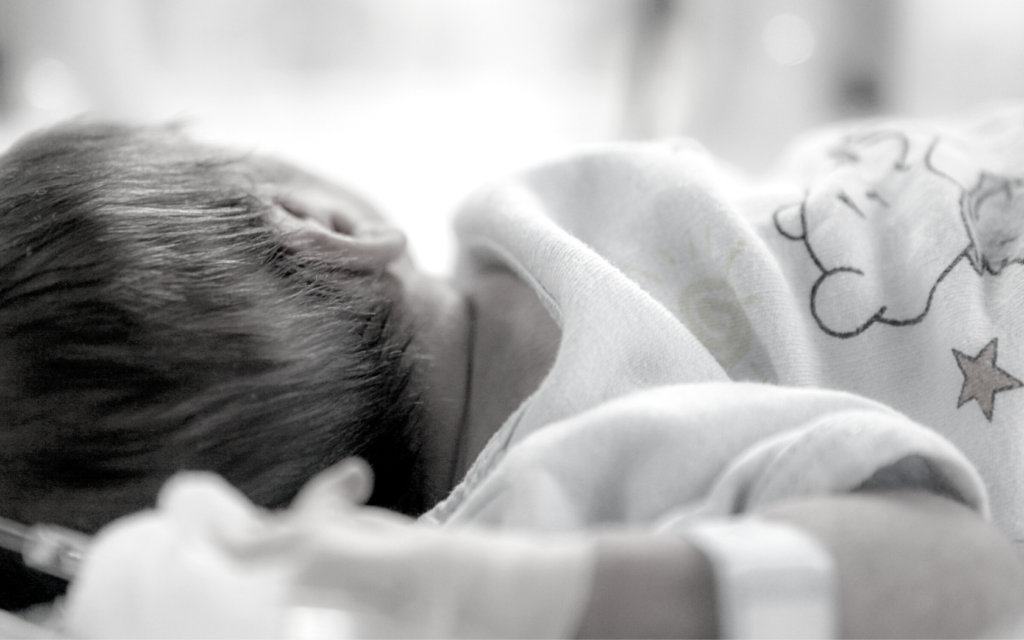It’s D-day! We’re talking about Delivery-day. It’s time for a mother to go into the hospital with a giant pregnant belly, and come out with a newborn.
Hopefully, she won’t leave with an additional unwanted stowaway: staph bacteria. This staph bacteria leads to staff infections in babies, and can cause scalded skin syndrome as well. (Staphylococcal scalded skin syndrome, AKA SSSS).
Staph infection in newborn babies can have lifetime consequences if it’s allowed to progress. In this article, we’ll discuss what neonatal staph infections are, and how doctors can prevent them from occurring.
Did a doctor diagnose your baby with a staph infection or staph skin infection? Did your child suffer serious injuries as a result? Our malpractice law experts can help you determine if negligence was involved, and whether you’re entitled to damages. Contact Hampton & King here for a free consultation.

What Are Staph Infections In Babies?
Staphylococcus aureus, or Staph for short, is a type of common bacteria. It’s generally harmless when it lives on the skin’s surface. Healthy people can have staph bacteria on their noses, mouths, and genitals.
But when staph gets below the skin’s surface, that’s another story. If it finds its way in through an open wound or sore, it can cause a dangerous infection.
Most newborns are born in hospitals, a place rife with bacteria, good and bad (staph bacteria included). But doctors take extra-exaggerated precautions to protect patients—and especially babies. Stringent hygiene protocol can keep infections from spreading to them.
And yet staph infection in newborn infants does happen. How?
Here are a few different examples:
- Suppose a baby has to undergo a complicated procedure or receive invasive treatment. Staph could be present on equipment like a catheter or a mechanical ventilator.
- Sometimes newborns come down with infections because doctors or nurses fail to follow hygiene protocol. (Protocol like wearing gloves and sanitizing instruments.) This could constitute medical negligence.
- Mothers or visitors might infect babies with the bacteria.
It’s also possible for staff to pass on the “staph” despite their best efforts to keep it at bay. Why? Because certain risk factors make some infants more susceptible to staph infections than others. Let’s take a look at some of them below.
Risk Factors For Staph Bacteria Exposure & Infant Staph Infections
In general, the longer a newborn stays in the hospital, the more risk of developing a staph infection. That’s because there’s more opportunity for exposure.
But are other risk factors, such as:
- Being premature
- Undergoing invasive procedures (like being on a ventilator or undergoing surgery)
- Having a low birth weight
- Getting overexposed to antibiotics (directly or through maternal usage)
- Having a weakened immune system
- Needing to use a catheter or feeding tube
- Staphylococcal colonization (presence of the bacteria on the newborn). Infants born to mothers with staphylococcal colonization are more likely to be colonized. But while colonization is a risk factor, it doesn’t mean an infant will become ill.
- Newborns in neonatal intensive care units (NICUs) have an increased risk
Are Staph Infections In Newborns Serious?
Now let’s take a look at the signs of staph infections in newborn babies.
If medical personnel take swift action, they can catch an infection in its early stages.
Symptoms of staph infection in newborns:
- Skin infections, lesions or blisters (skin infections are some the most common forms of staph infections)
- Swollen skin
- A fever
- Swelling, heat, and/or redness around a wound
- Vomiting
- Boils
- Abscesses
- High or low body temperature
- Heart beats too slow or too fast
- Poor feeding
- Lethargy and irritability
- Skin rash
- Redness
- Pus
- Yellow scabs
- Eye styes
- MRSA
How long does a staph infection last?
It ranges a lot, and depends on what type of infection we’re talking about and how severe it is. That said, mild staph infections like minor, surface-level staph skin infections, or minor boils or styes can resolve within a week or two. And sometimes less with proper treatment. Bone or bloodstream infections, on the other hand, can take several weeks or even months to resolve.
Is a Staph Infection & Methicillin Resistant Staphylococcus Aureus (MRSA) Serious?
Once they diagnose an infant with a staph infection, doctors will prescribe antibiotics. Methicillin is the usual choice to treat newborns. But some strains of staph are resistant to methicillin (methicillin resistant staphylococcus aureus; MRSA infections), so a different antibiotic might be the ticket.
If the infant has a skin lesion, doctors will apply a clean bandage to it, because skin lesions are often caused by skin infections. And infant skin infections must be treated immediately because they can lead to staph skin infections and much more serious staph infections.
Judging from those treatments, a staph infection in newborns doesn’t sound serious at all. But it’s a different ball game if doctors miss the signs “pitched” by the infection.
Complications Of Staph Infections In Newborn Babies
Doctors try to catch and treat staph infections, staph skin infection and other infections quickly. Because if they catch it in time, they can prevent staph skin infections and other infections from morphing into serious conditions like sepsis or meningitis. (And MRSA infections can too, sometimes even with treatment.) Sepsis is an illness in which the infection invades the baby’s bloodstream.
Antibiotics like ampicillin and gentamicin can treat sepsis. But what if doctors don’t treat the baby for sepsis? The infection can then spread to the brain and spinal cord. This is a dangerous condition called meningitis.
Without prompt treatment, meningitis can lead to severe problems including:
- Brain damage
- Cerebral palsy
- Hearing loss
- Vision problems
- Developmental disabilities
- Seizures
- And even death

Legal Recourse For Staph Infections In Newborns
If your baby was injured by a staph skin infection or other staph infection stemming from negligence, you have the right to file a medical malpractice claim. But how do you know that a doctor’s negligence was the cause?
Speak with a birth injury lawyer. This type of attorney has the expertise needed to sort through your child’s complex hospital records. They can help you determine whether hospital personnel were at fault. To speak with our legal team about your child’s case, contact us here.
FAQs About Staph Infections In Babies
Babies can acquire a staph infection in a number of ways. Here are some ways a baby can get a staph infection: Skin-to-skin contact, contaminated objects, a substandard hospital environment, invasive medical procedures, and bad hygiene. While these bacteria often cause little to no harm, they can lead to infection and cause serious issues.
The early signs of a staph infection can vary, but some common early signs and symptoms to look for include red skin (affected area appears red or flushed), swelling around the site of infection (inflammation), skin around the infection feeling warm, pus-filled lesions (small, pus-filled bumps on the skin that may look like boils, spider bites, or pimples), and fever (or other signs of systemic illness).
A mild staph infection can resolve on its own without medical intervention, especially if the body’s immune system is strong and able to fight off the infection. That said, staph infections can vary widely in severity, and they often require medical treatment, like antibiotics.
Yes, a staph infection in a baby can be very serious, especially if it is not promptly diagnosed and treated. Staph infections in babies can be mild and easily treatable, but many are more severe or systemic, posing substantial health risks to the baby.




